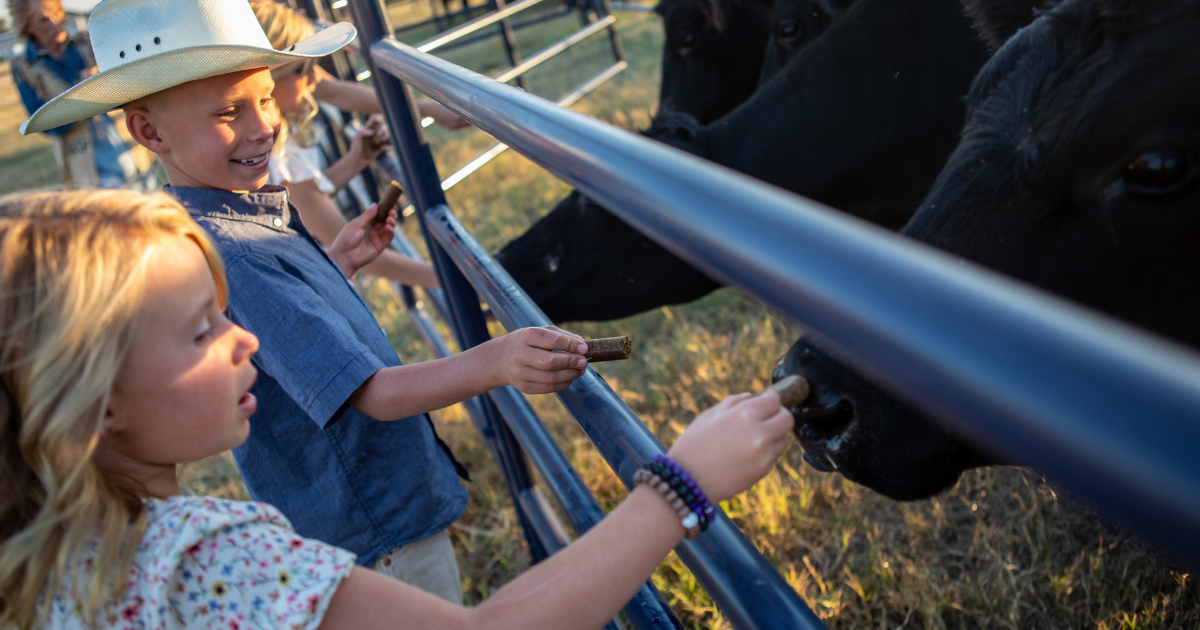
4.5.22
Tips for Choosing The Best Livestock Fencing for You
Fencing is one of the most critical decisions you’ll make for your ranch. Your productivity and the health & safety of your handlers AND livestock depend on sound decisions. Your fencing options are almost limitless, ranging from permanent fences to portable ones. But among all of these options, one of the most important decisions is which type of fencing is best for your needs. As cattleman & designer Larry Deges says, “We ask the right questions to get you the right product.“
Choosing the Best Type of Livestock Fencing – Establish your purpose.
There are hundreds of different scenarios and configurations for using livestock fencing. Before deciding which type is right for you, envision the different scenarios you may need to use the fence panels. Let’s go through a few scenarios and discuss solutions for each plan.
You’d like to build round pens for horse training.
MJE LE recommends using portable Rebel Equine panels for building round pens. Rebel Equine panels are made with 16-gauge steel tubing that is durable and strong but not too heavy. Curved 14-gauge legs don’t sink into the ground. Equine panels are also 6′ tall vs. the traditional 5′ Rebel panels – perfect for working horses. The unique 3-way connection keeps gaps between panels to a minimum. Pens are easy to connect, and MJE LE has a handy chart to determine how many panels you’ll need for various pen sizes.
You need to work cattle where there is not a permanent processing facility.
Think about where you might need to sort or process your cattle. Use a portable panel trailer with Elite or Rebel panels to conveniently work cattle on the go without investing in a large enclosed trailer. Set up pens quickly, and load up panels to move to the next area with ease.
Another option for working cattle on the go is the all-new Conquistador wheel corral. The Conquistador is the largest wheel corral on the market. It has everything you need to gather, sort, ship, or process your cattle herd. In addition, it includes two sets of palpation cages – one for a squeeze chute and one for the headgate. A bonus? The Conquistador is road-ready with brakes and lights for easy transport.
You lease pasture ground.
If you don’t own the ground, it doesn’t make sense to construct a permanent asset. Portable panels are an excellent way to work cattle on ground you don’t own. As a ranch asset, they can be easily moved.
You plan to expand your herd down the road.
Modular fences made from Elite or Rebel panels are excellent for ranchers growing their operations. The Elite system gives the most flexibility in terms of expansion. The Elite Eliminator Tub & Alley System is explicitly configured to suit your needs. As the need for additional pens arises, you can add extra panels and gates.
Choosing the Best Livestock Fencing – Narrow down your top priorities.
You’ve got a lot of priorities on your Livestock Ranch, but the most important thing is to make sure your animals are happy and healthy. That means making sure you’re prioritizing the needs of your animals, your livestock handlers, and your budget in good measure. Asking yourself these questions can help guide you to the right livestock fencing for you.
What does your existing livestock fence setup consist of?
When deciding to expand or change how you’re caring for your livestock, you need to consider what you’re using right now.
- What do you like about what you already have in place?
- What are the challenges you face with your current system?
- How much room do you have?
- How much space do you need for your vision?
Speaking with a professional designer who can use AutoCAD to build a custom design makes purchasing decisions easier.
How many handlers and heads of livestock do you have?
Recommendations for livestock equipment and processing facilities are vastly different for solo ranchers than for larger feedyards. For example, crowding pens should be made with heavier-duty steel used to build our Elite panels. Smaller holding pens will work well with Rebel Panels or our taller Rebel Equine Panels. Choose your alley based on how many handlers you may have helping you work cattle. Processing cattle alone may mean you need a smaller alley that allows you to move quickly from one end to the other.
Do you prefer to work livestock by foot or by horseback?
Gathering, sorting, shipping, or processing cattle is distinctly different from horseback than by foot. When discussing your process with your sales rep, it’s vital to share details about your preferences in handling livestock. MJE LE designers can make specific product and layout recommendations based on how you work the cattle.
What gates and accessories will you need to complete your setup?
Finally, it’s essential to ensure you have everything you’ll need to get the job done right. It’s important to get accurate counts for gates, panels, bolts, posts, and all the other bits & pieces needed to bring your vision to life. With MJE LE as a partner, you’ll never be alone in the process.
Our experienced team asks the right questions to help determine everything you need to build your facility. MJE LE helps build a facility and enables you to create a plan to take your ranch operation to the next level.
CONCLUSION
MJE Livestock Equipment is designed by cattlemen with years of experience in livestock handling. Our staff works with our clients to help make custom livestock equipment handling decisions that will work for years to come. We take your existing setup, ask strategic questions about your vision, then build a plan for success with you based on your goals and budget.